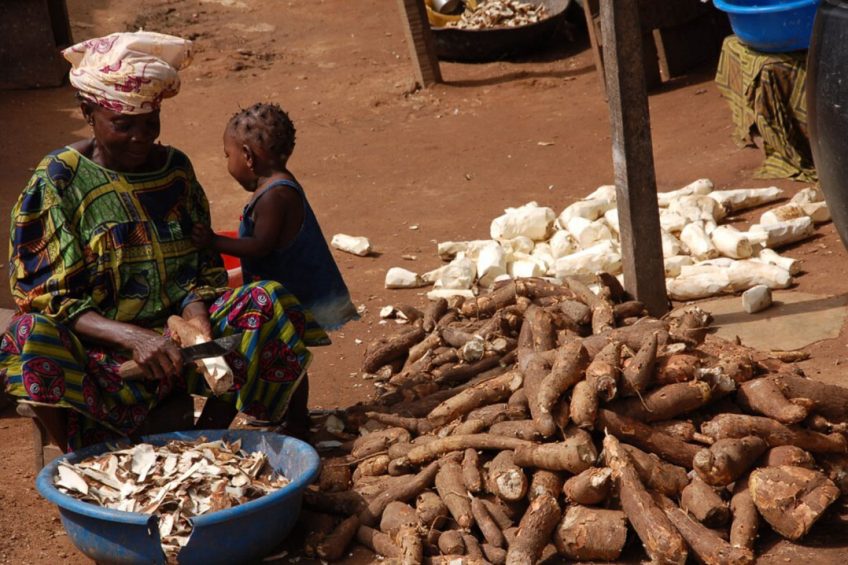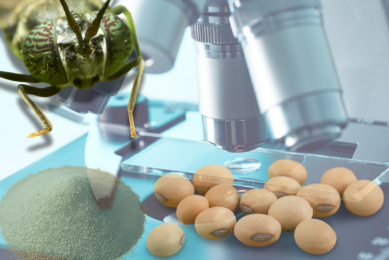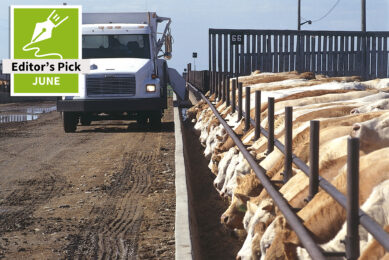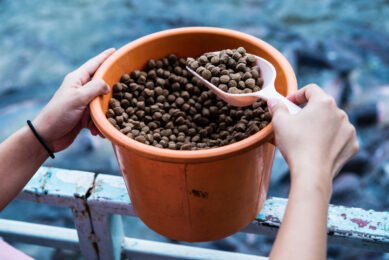Cassava peels: From waste to valuable livestock feed

Transforming cassava peel into nutritious animal feed has the potential to partially replace maize in animal feed while reducing environmental pollution and minimising post-harvest losses. This crop-waste by-product could be a valuable feed alternative.
Cassava is a major subsistence and commercial crop in sub-Saharan Africa and, according to the FAO, around 178 million tonnes is produced annually.
Converting the waste from cassava into a safe livestock feed is a game-changer…
Challenges of cassava processing on the environment
Cassava processing for both household consumption and industrial use generates considerable quantities of cassava peel which are left in large heaps to rot or are set on fire. Rotting heaps release methane into the air and a stinking effluent pollutes nearby streams and underground water, while burning produces clouds of acrid smoke. Nigeria, which is the largest global producer of cassava, harvests about 59 million tonnes of cassava a year (20% of global production), resulting in about 15 million tonnes of wet peels.

Use of cassava peels for feed – an age-old practice
The use of cassava peels in livestock feed is an age-old practice. Traditionally, farmers would sun-dry the peels in small quantities as a feed resource. This labour-intensive process has been cut to a fraction of the time thanks to a process developed by the International Livestock Research Institute (ILRI) and the International Institute for Tropical Agriculture (IITA) that grates, dries and dehydrates wet cassava peels and turns them into High Quality Cassava Peel (HQCP) mash. With a moisture content of about 10-12%, the final product can be stored for about 6 months.

High Quality Cassava Peel (HQCP) mash
“HQCP mash is a perfect animal feed ingredient in cassava-producing countries,” said IITA agricultural economist, Iheanacho Okike, who has led the development of the innovation. “It’s energy-rich and has a nutritional value close to maize. When used in animal feed, it reduces the amount of maize needed, which lowers costs and frees up valuable grain for human consumption.”
HQCP mash improves feed conversion efficiency
Feeding trials conducted with small and large-scale farmers across Nigeria have shown the mash to improve feed conversion efficiency.
- Broilers: In broiler diets, specifically, this mash could replace 20%, or 1.5 million tonnes of maize going into manufactured feed.
- Layers: For layers, it was determined that the cassava mash replaced 35% of the birds’ feed ration and resulted in a 10-15% reduction in the cost of feed for local farmers.
- Pigs: Meanwhile, cassava mash can replace up to 75% of maize in the diet of growing pigs with about 4% reduction in cost per kg weight gain without any adverse effect on the growth performance.

Cassava peel mash is now a viable industry in Nigeria and has the potential to be scaled out in other countries. “Converting the waste from cassava into a safe livestock feed is a game-changer in resolving the near-perennial animal feed scarcity crisis, pastoralist-farmers conflicts over natural resources and the high costs of compound feeds in Nigeria and other cassava-producing countries in Africa,” said livestock feed specialist, Tunde Amole from ILRI.
* This innovation is an outcome of a multi-centre CGIAR collaboration including ILRI, the International Institute of Tropical Agriculture (IITA) and the International Potato Center (CIP) and CGIAR research programs on Livestock (Livestock and Fish in Phase 1) and Roots, Tubers and Bananas and Humidtropics.











